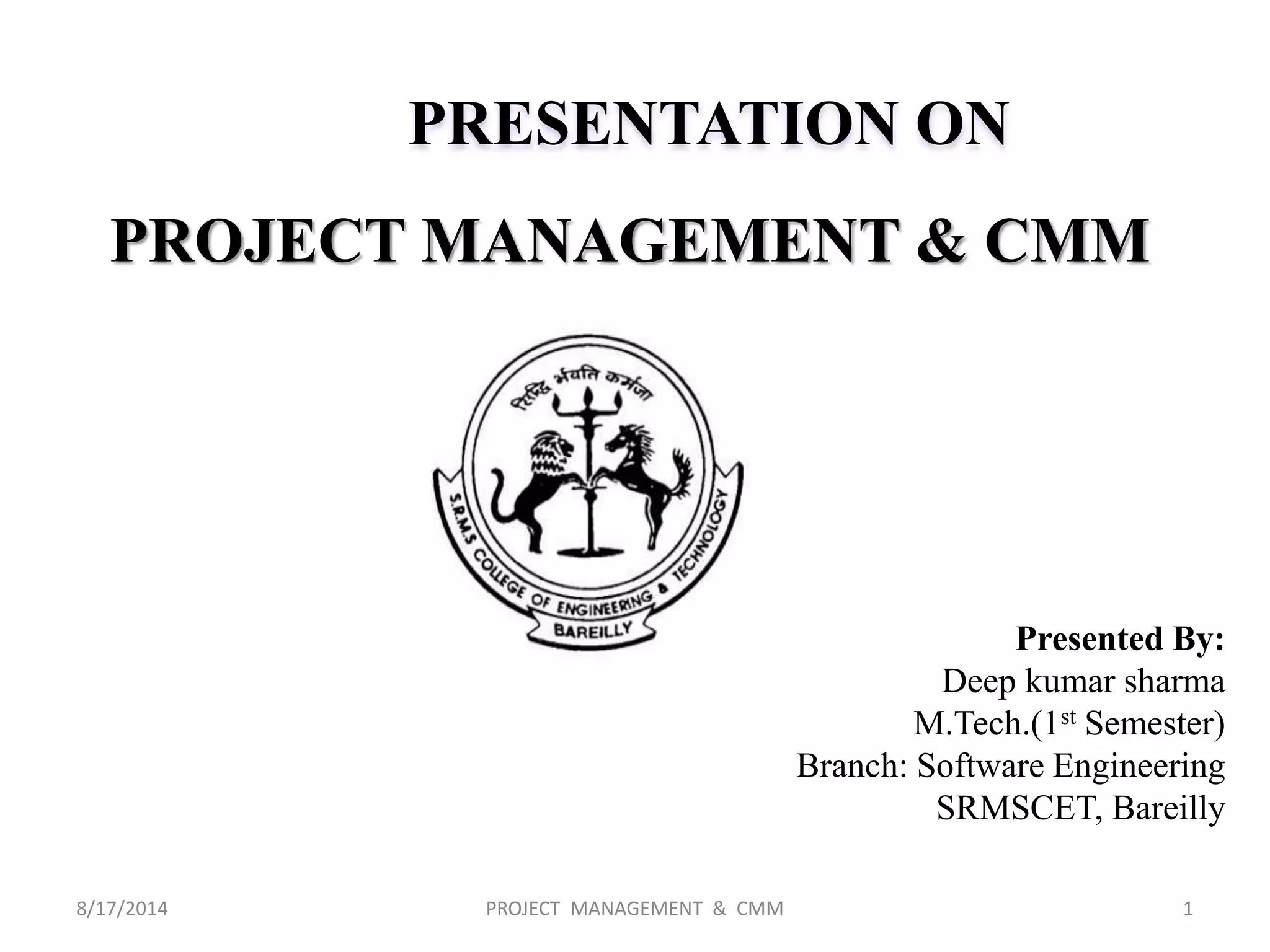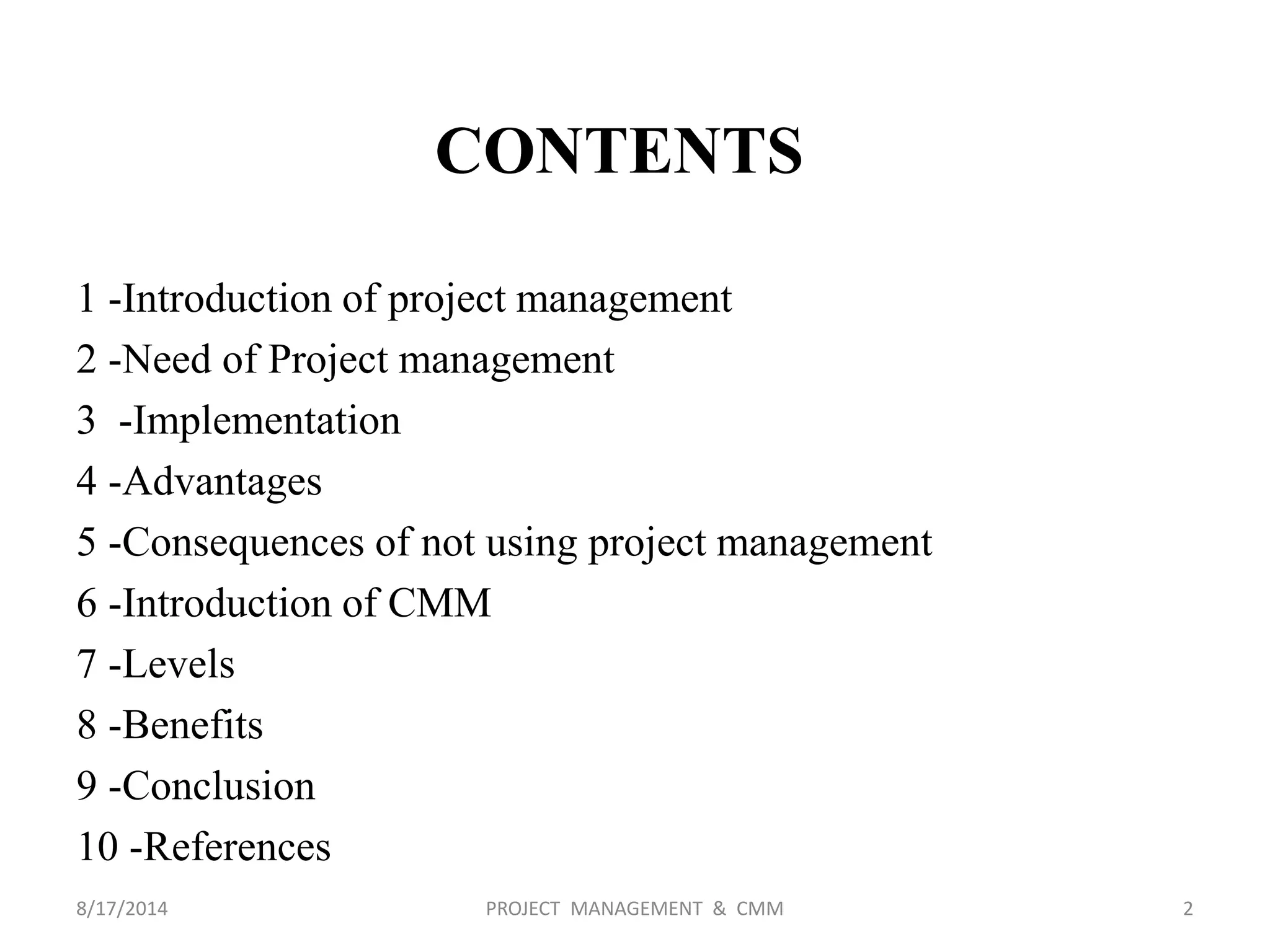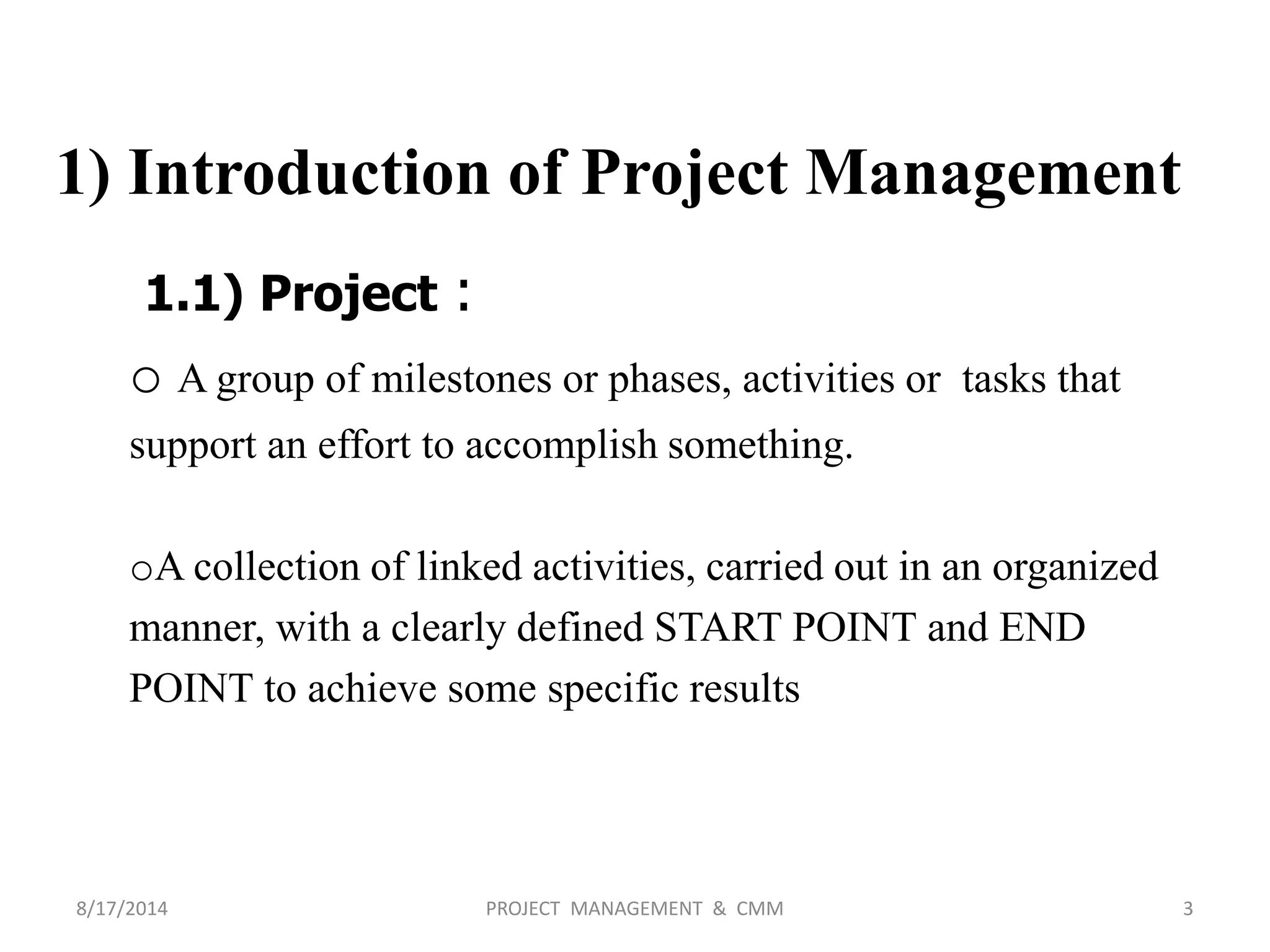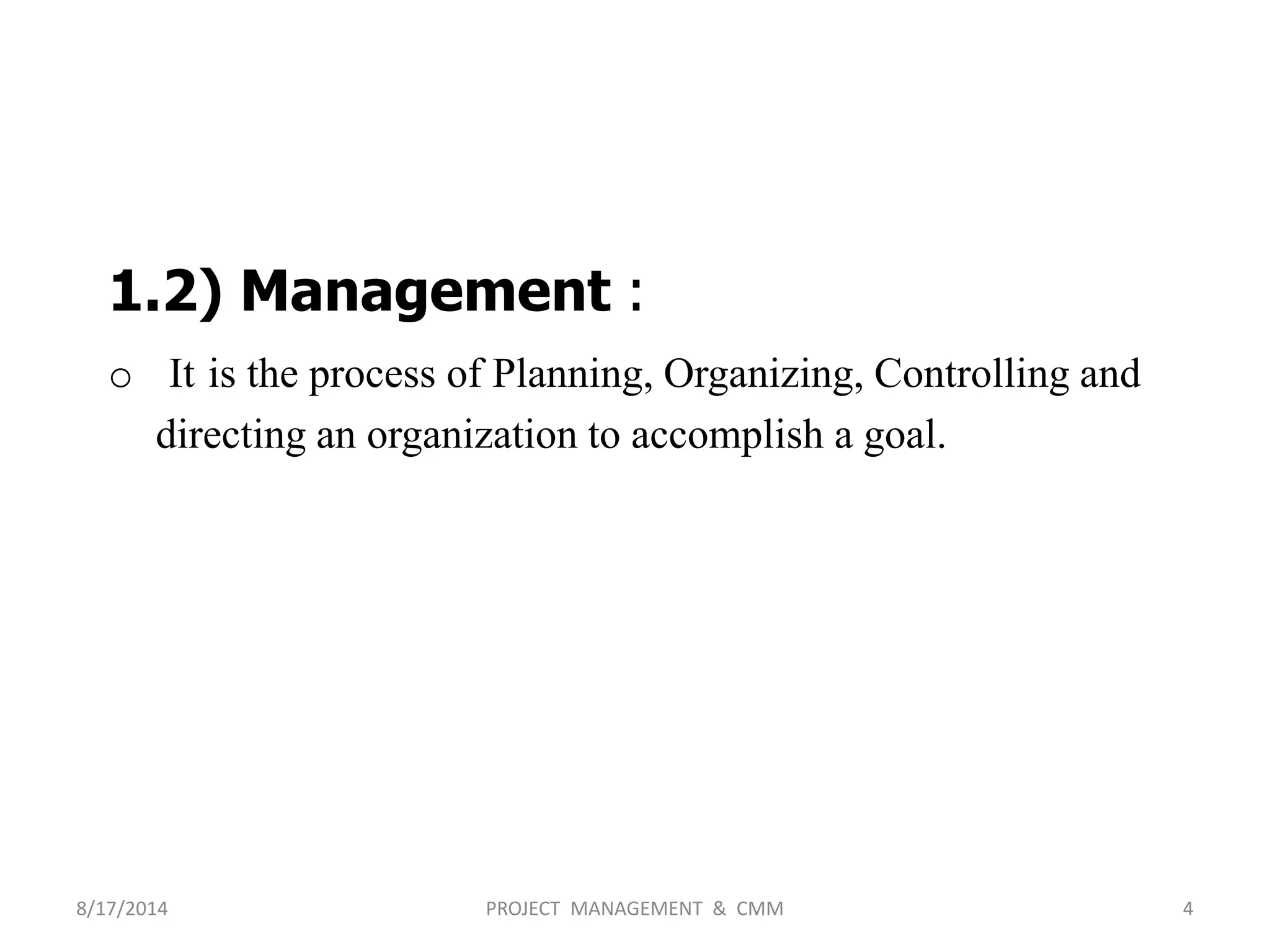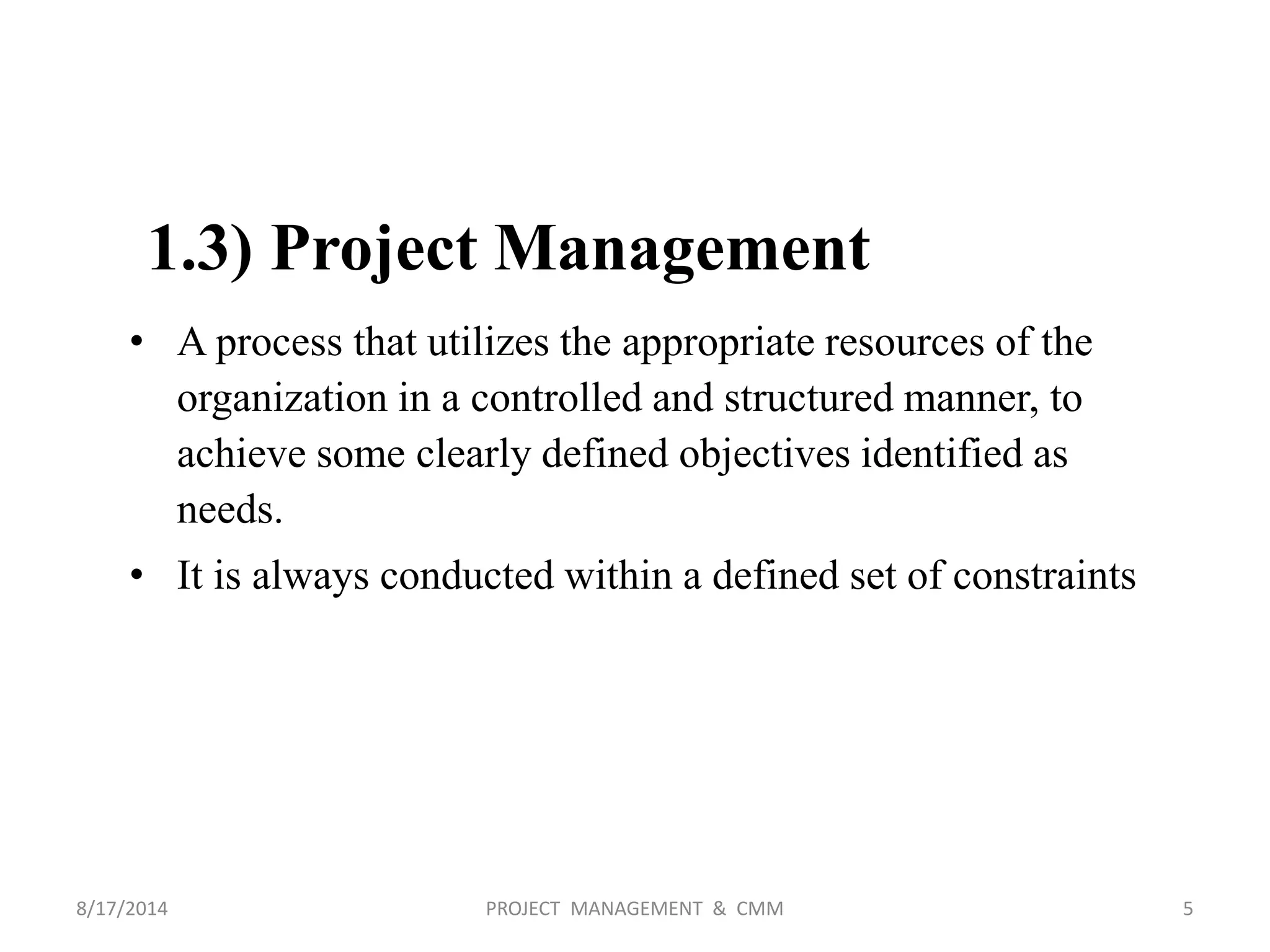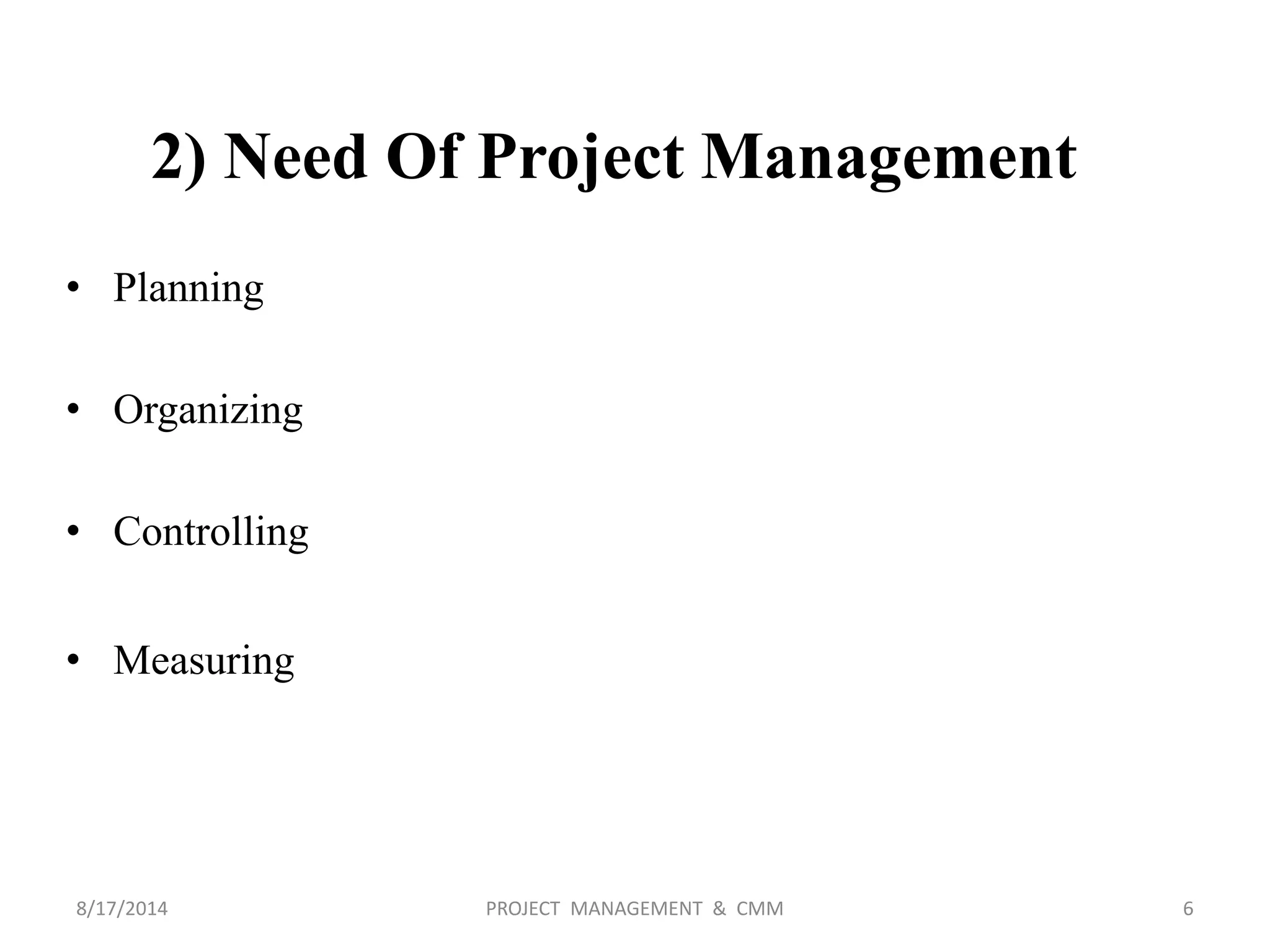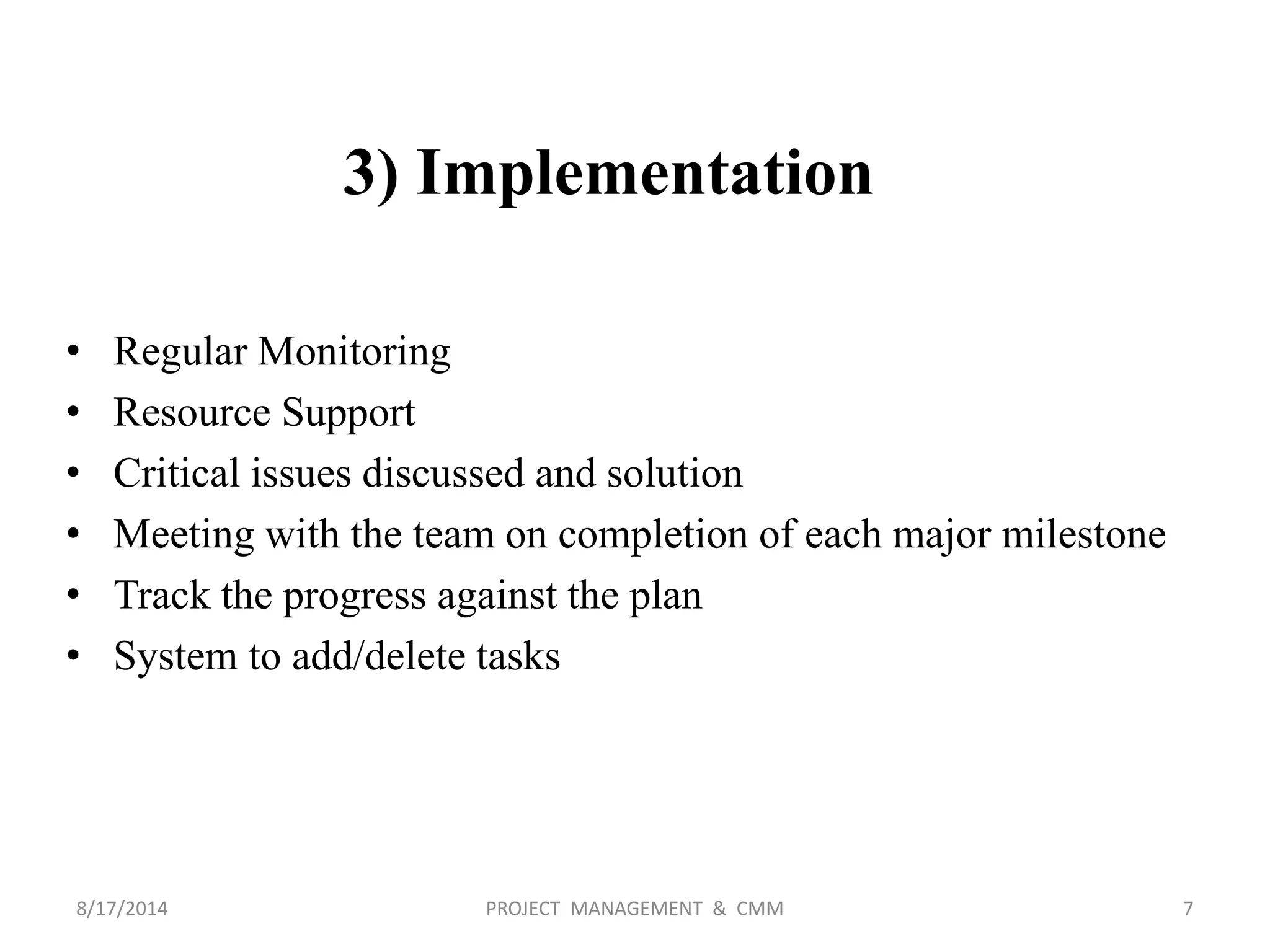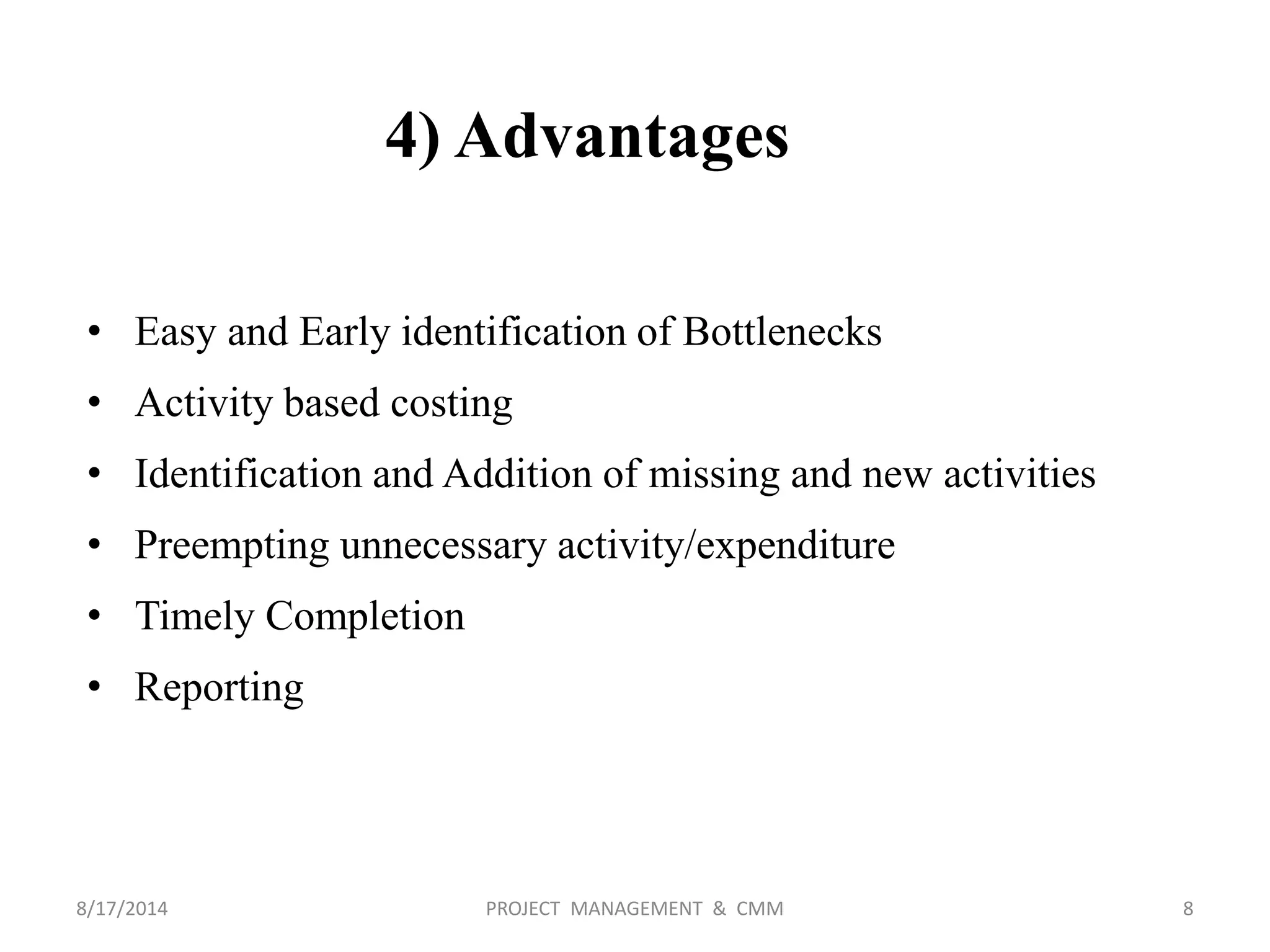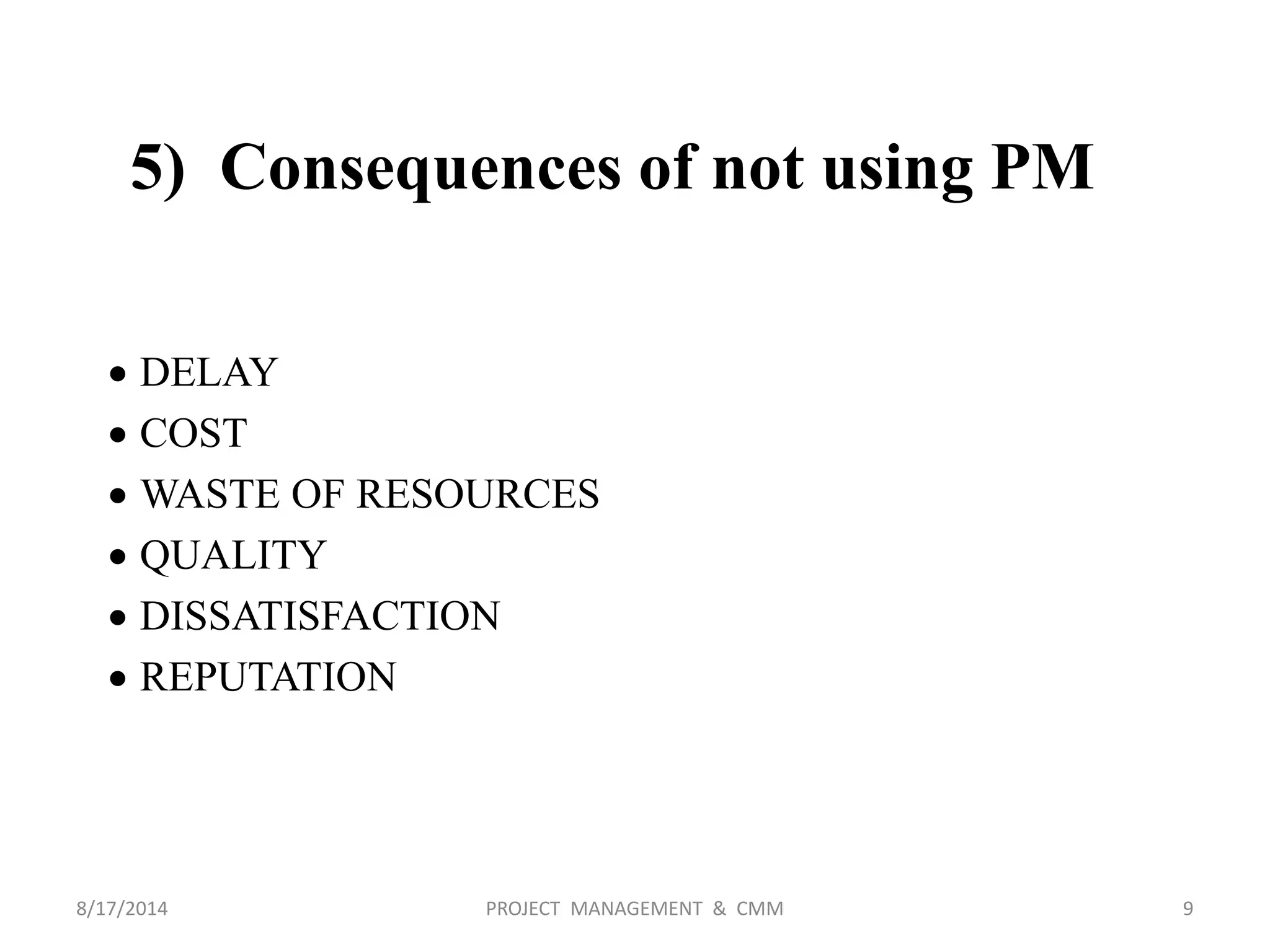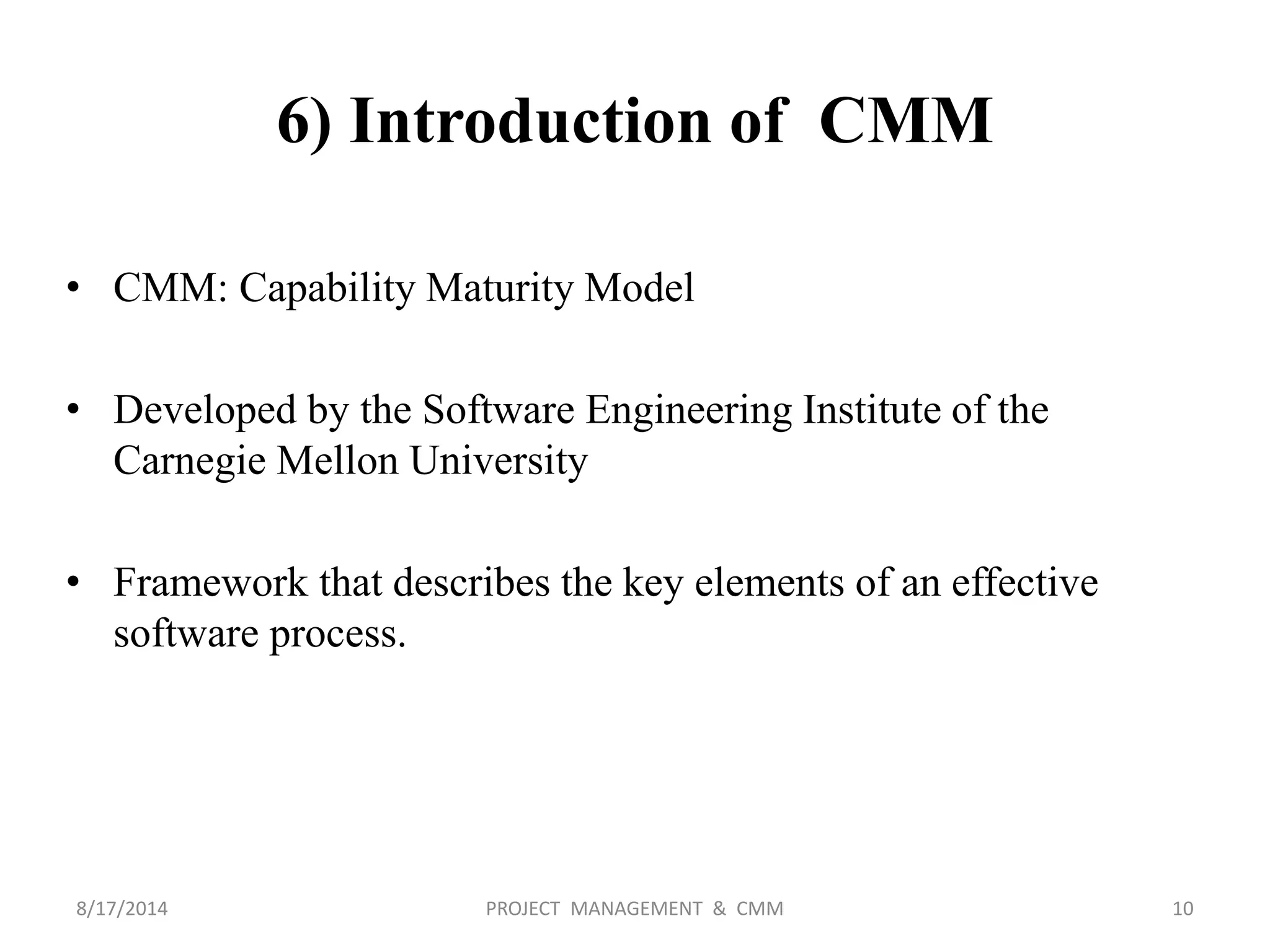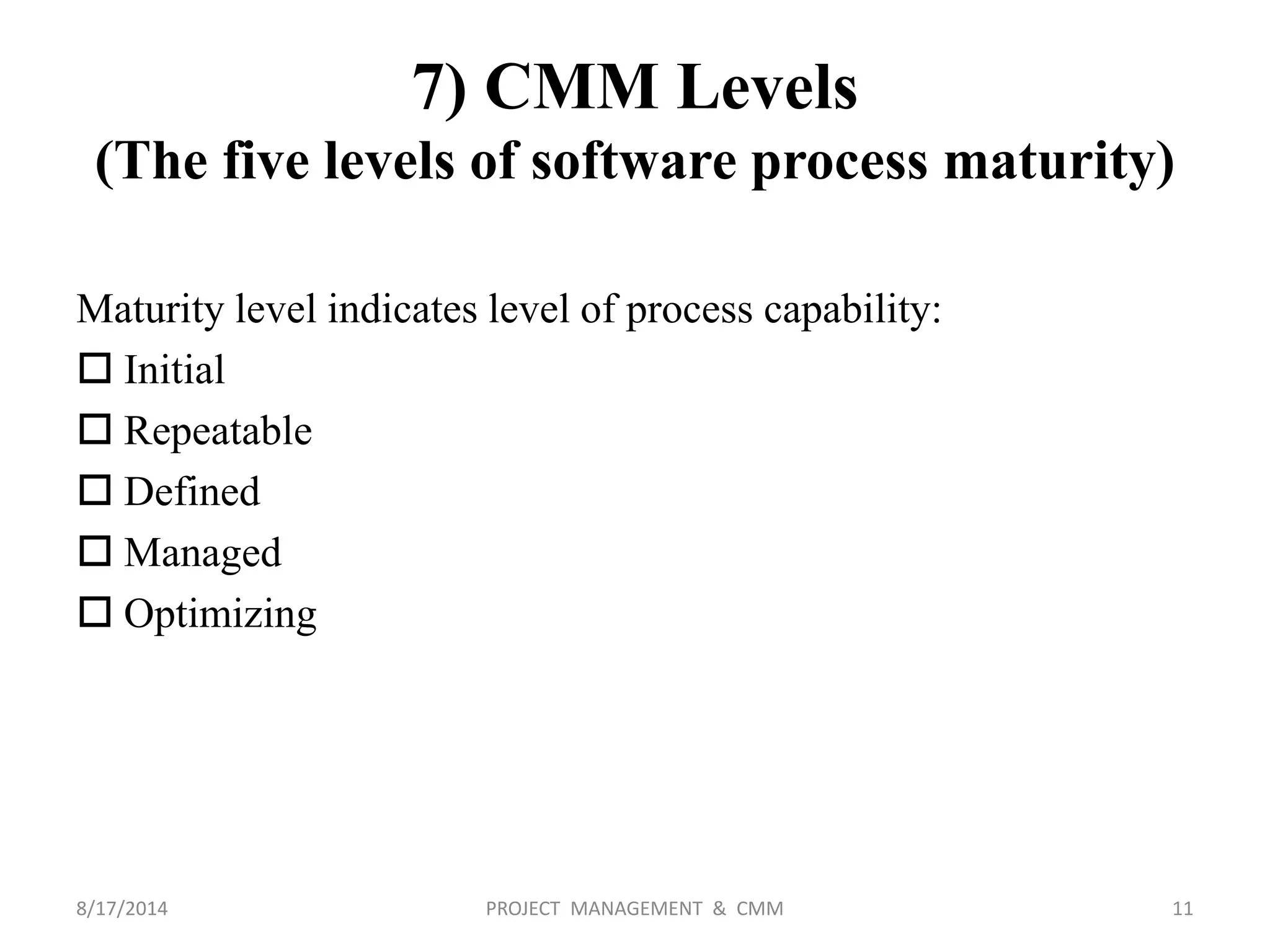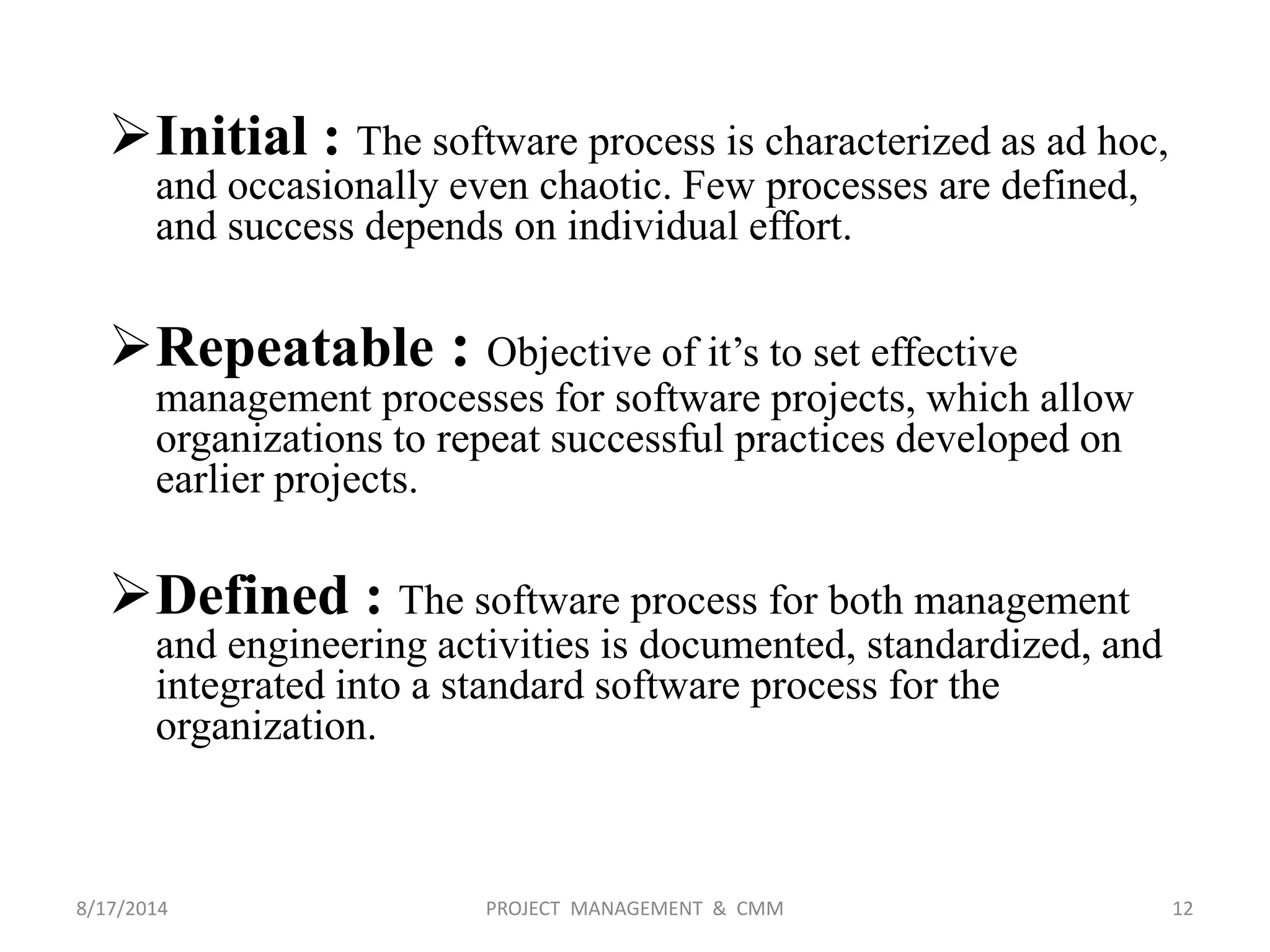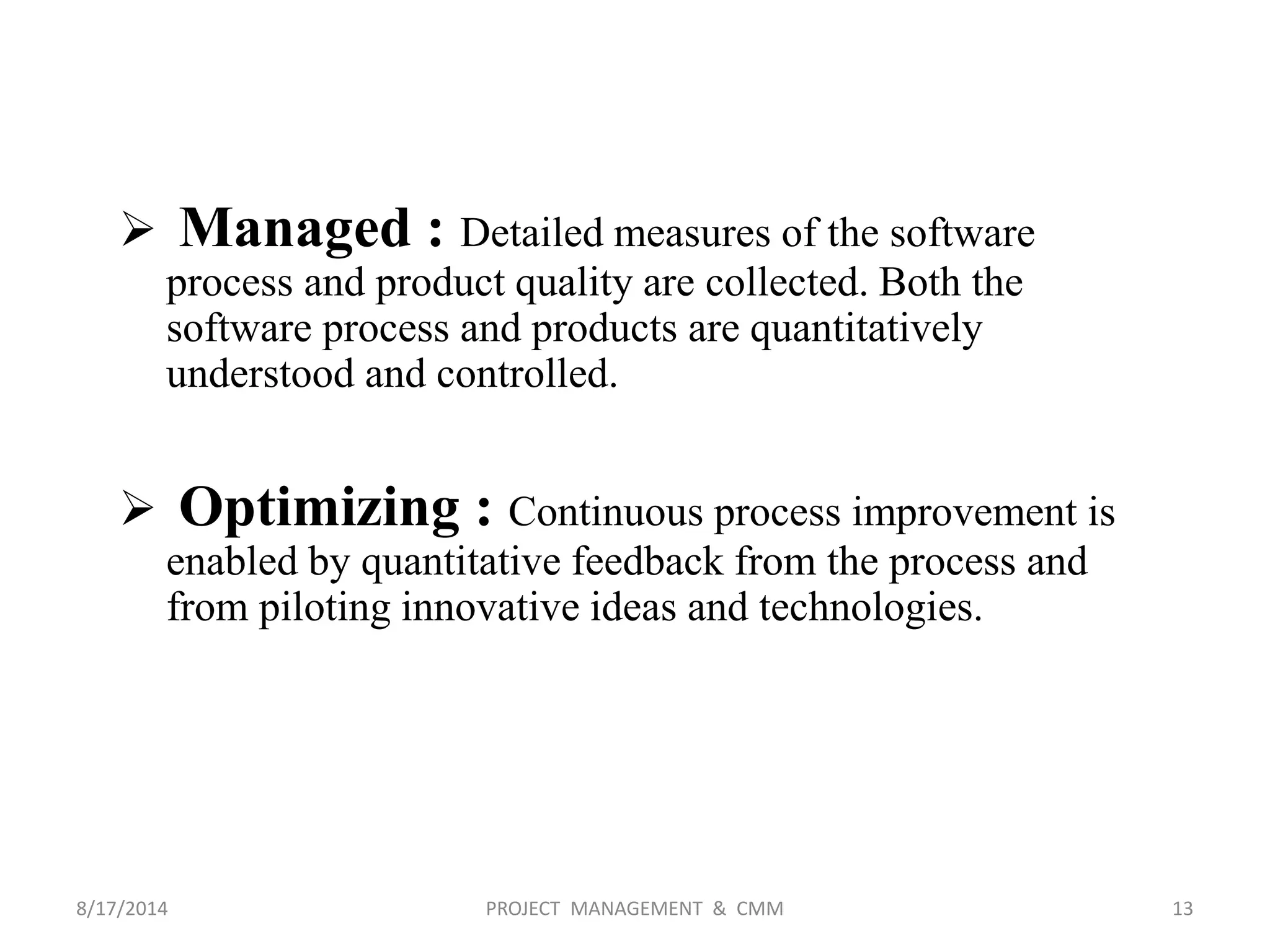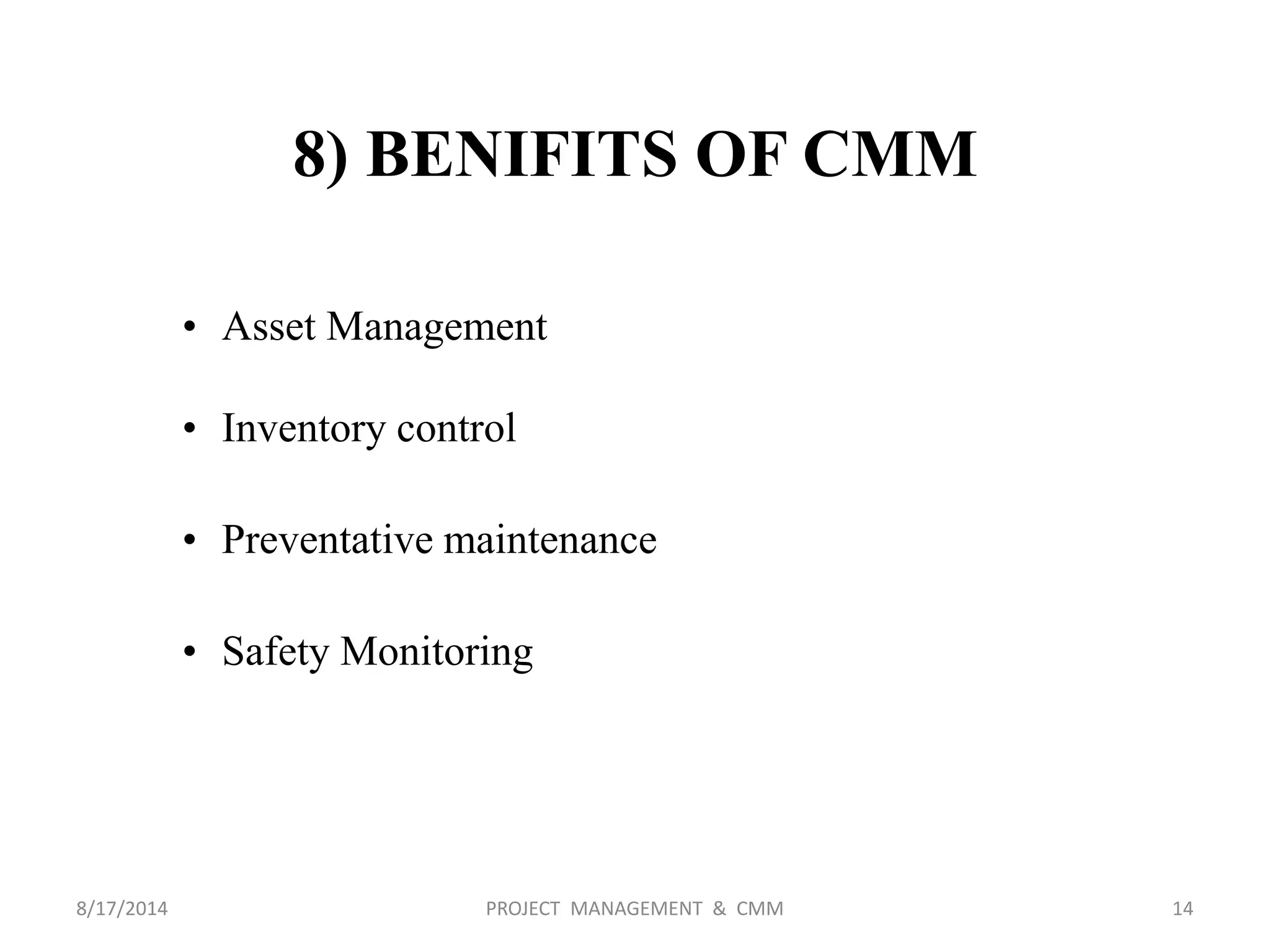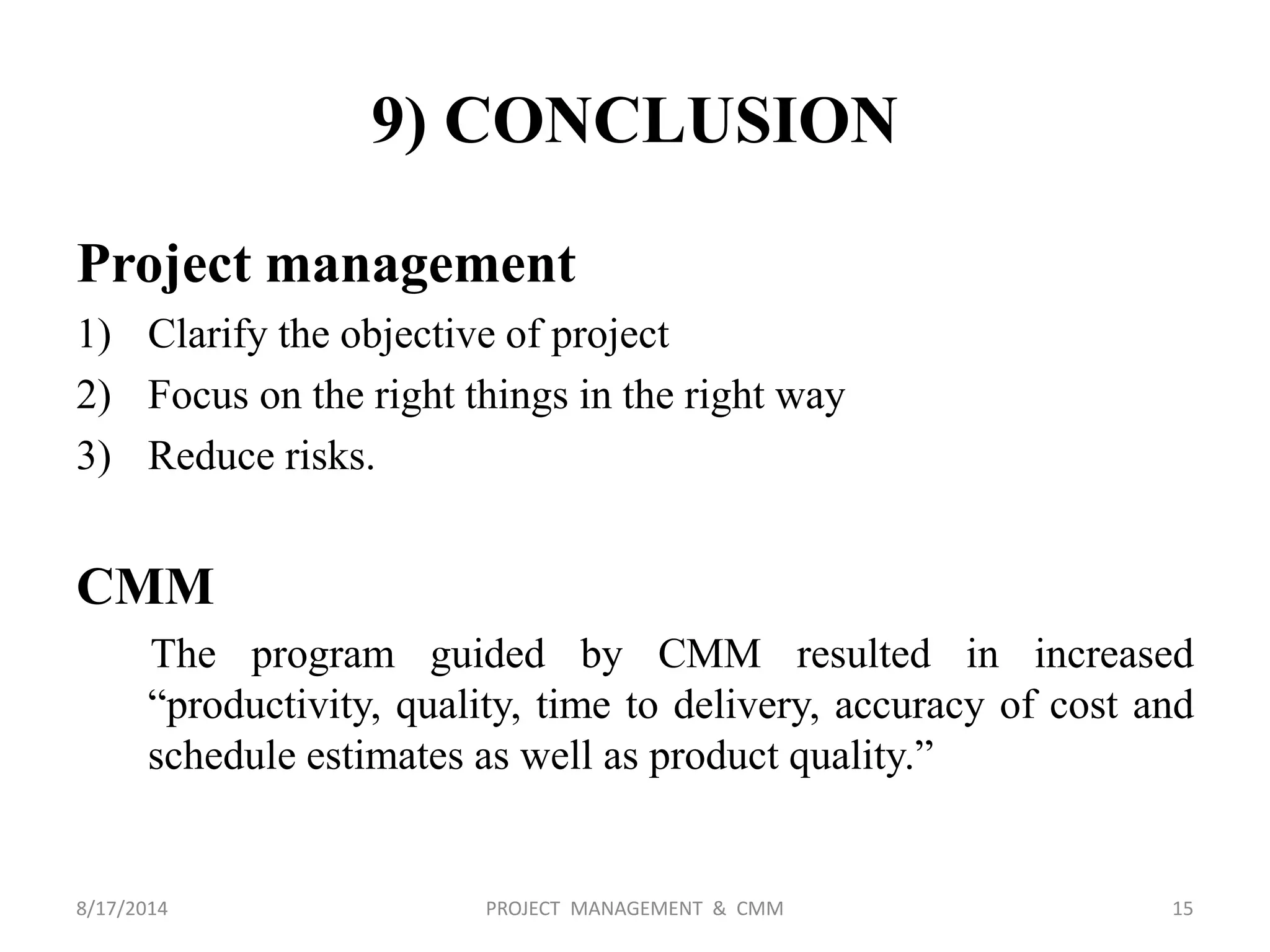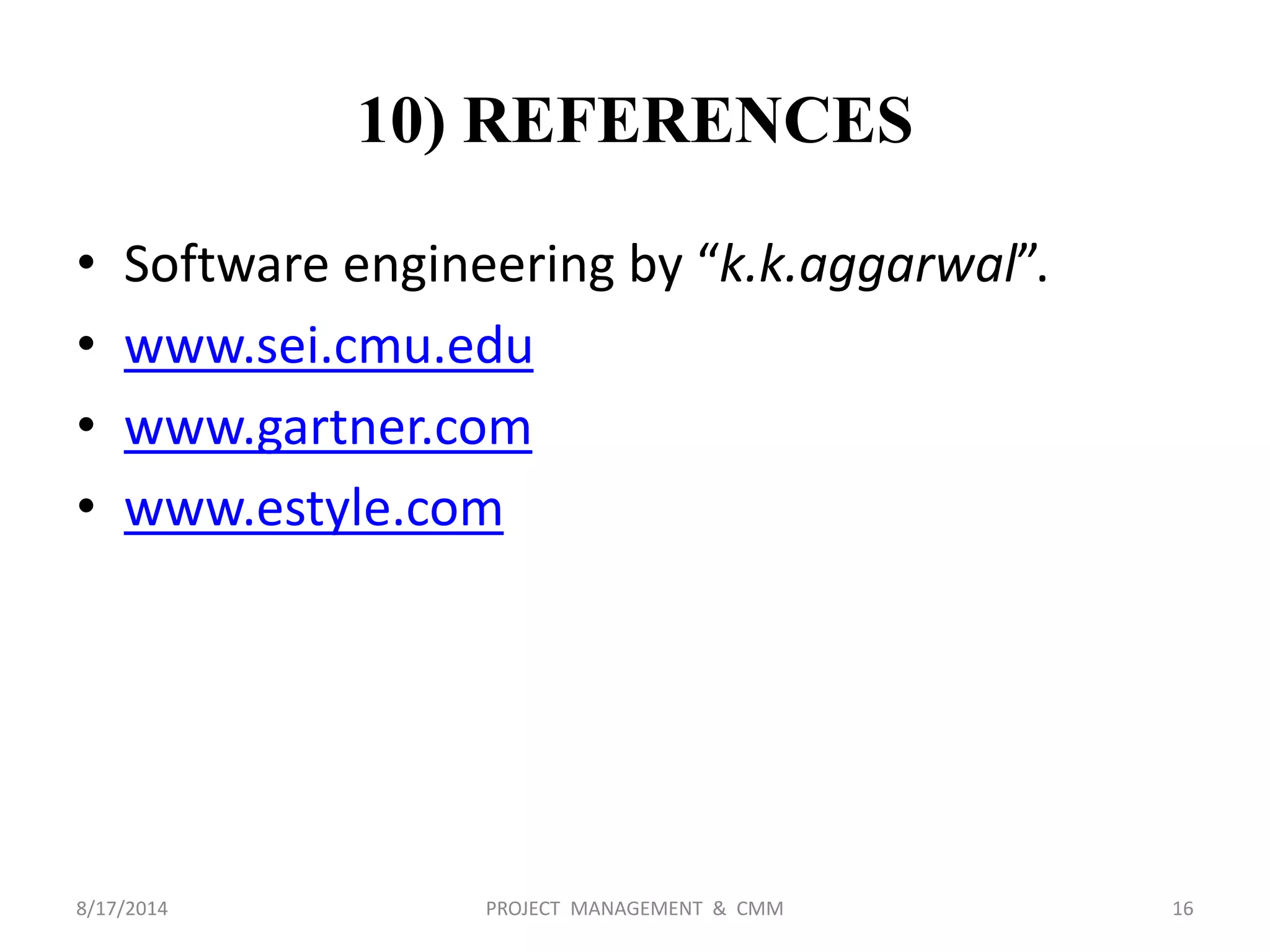This presentation discusses project management and the Capability Maturity Model (CMM). It introduces project management as a process that utilizes organizational resources in a controlled manner to achieve defined objectives. The need for project management is explained in terms of planning, organizing, controlling and measuring. The CMM is introduced as a framework that describes key elements of an effective software process, with five levels of maturity from initial to optimizing. The benefits of both project management and following the CMM include increased productivity, quality, and on-time delivery.
